We thought it would be a helpful exercise to review our energy usage. It’s a simple exercise, and one that’s quite informative.
This article dives into:
- Our yearly gas usage
- Estimating how much we spend on the three gas appliances: cooking, heating and hot water
- Our yearly electricity usage
Yearly Gas Usage
We tabled our regular gas bills over the past 12 months.

Our yearly gas use is around $1,300. The yearly average gas bill in Victoria is around $920, so it looks like our gas usage is above average. We’ve always thought of ourselves as low energy users, so it’s a bit disappointing to learn that we are above average. Still, it’s helpful to know this is our starting point – we have some work to do!
The blue box shows our base daily gas usage through the warmer months (20 October to 18 April). It assumes no heating. The dark red box shows our daily gas usage through the cooler months with heating (15 April to 19 October). We might of course switch the heater on in November or early April, but this will all wash out.
We use an average of around $1 of gas per day in the warmer months and $4.30 per day in the cooler months. This is just the cost of the burnt gas, it does not include the daily service charge (which in the table is 88.6 c per day). We can therefore assume that the $3.30 difference is spent on heating.
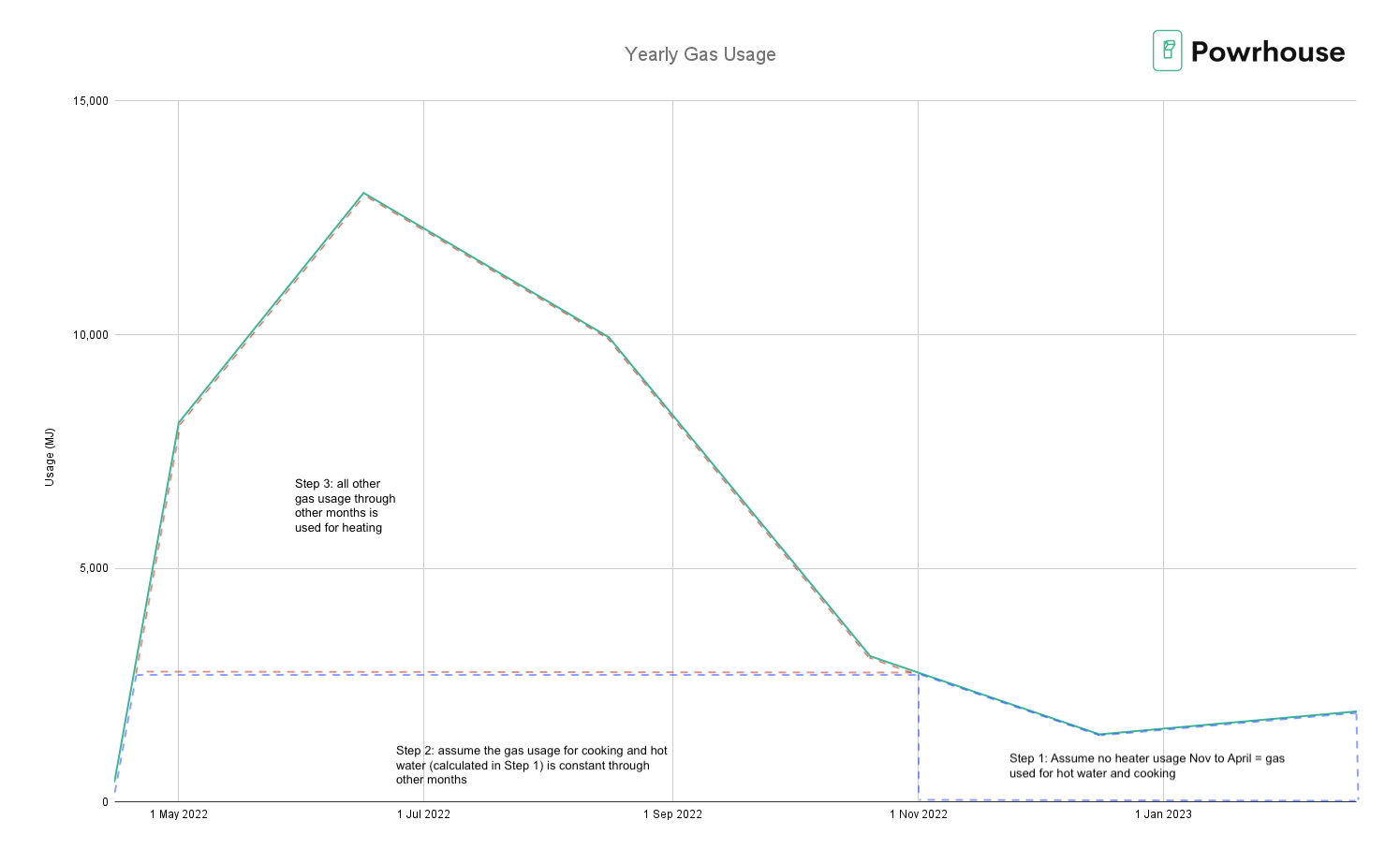
Let’s say we use the heater half of the year (187 days per our bills). We therefore spend $187 * $3.30 = $613 per year on heating. We then add the cost for the daily service charge, which we calculate as the total yearly cost divided by 3 as there are 3 gas appliances. The total cost of our heating is therefore $613 + $107 = $720
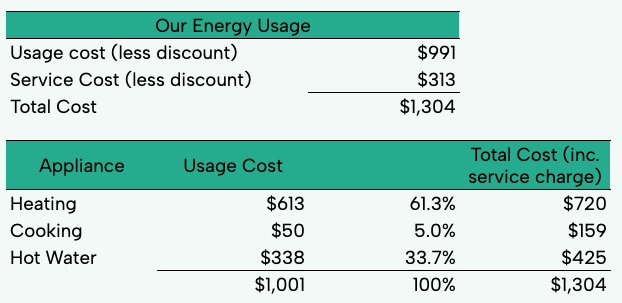
The cooking cost we assumed is $50 plus the apportioned daily service charge. The hot water cost is the difference.
Aside from being interesting, this information is very helpful as we consider the savings from switching from gas to electric appliances. We now know that we have a possible $720 savings from heating, a possible $425 from hot water and $160 from induction cooking.
Yearly Electricity Usage
Our electricity usage doesn’t really show anything insightful, but we’ll post it here for the sake of completeness. It also helps as a reference point as we electrify our home.
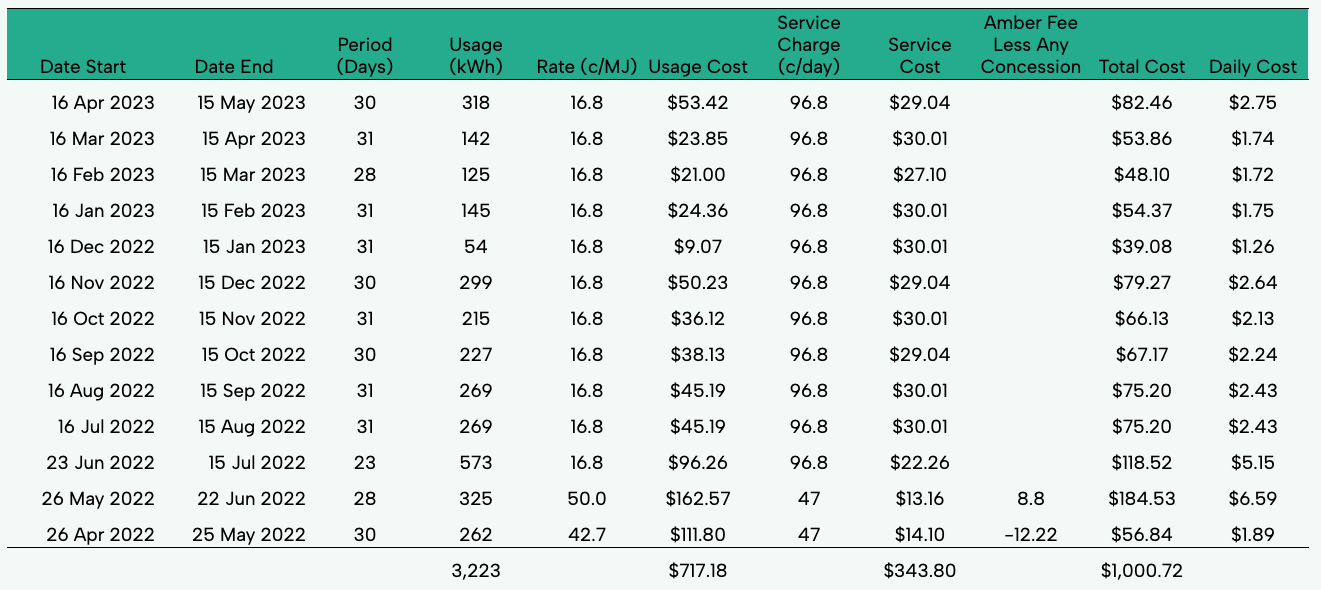
Our yearly electricity usage is $1,000. The average electricity bill in Victoria is $1,290, so while we’re a little over on the gas, we’re a little under on electricity. We should note that our house remains quite cool, so we don’t use the air conditioner a great deal.
We previously used Amber which passes on the wholesale rate to retailers. Amber has a neat app which shows you the wholesale rate at any given time, as well as the percentage of renewables in the grid. The idea is you time your usage during the day, so you use mostly renewables at a cheap rate. As you can see, while great in theory, it didn’t really work for us as the wholesale rate exploded last winter.
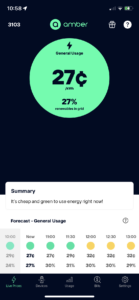
Conclusion
To fully understand our potential savings from fully electric homes, we first need to understand how much we’re spending and where the savings are. While I’m sure this analysis is a little dry for many, we find it insightful. Indeed, we are very happy to do this for clients, free of charge. Simply send us your yearly energy bills and we’ll load them into our spreadsheets and crunch the numbers. We can then consider each Powr Move and work out whether they make sense for your home.

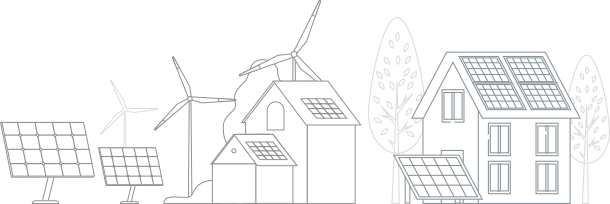
 Subscribe to Our
Subscribe to Our